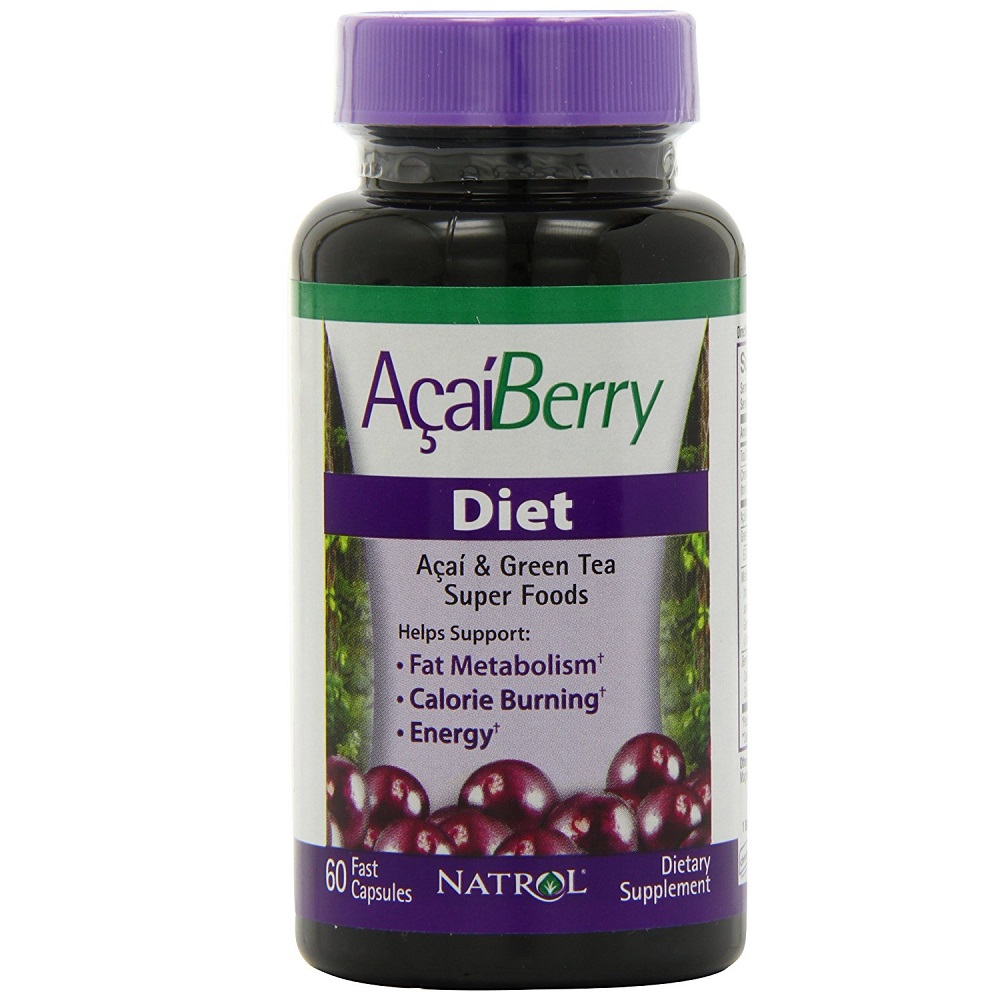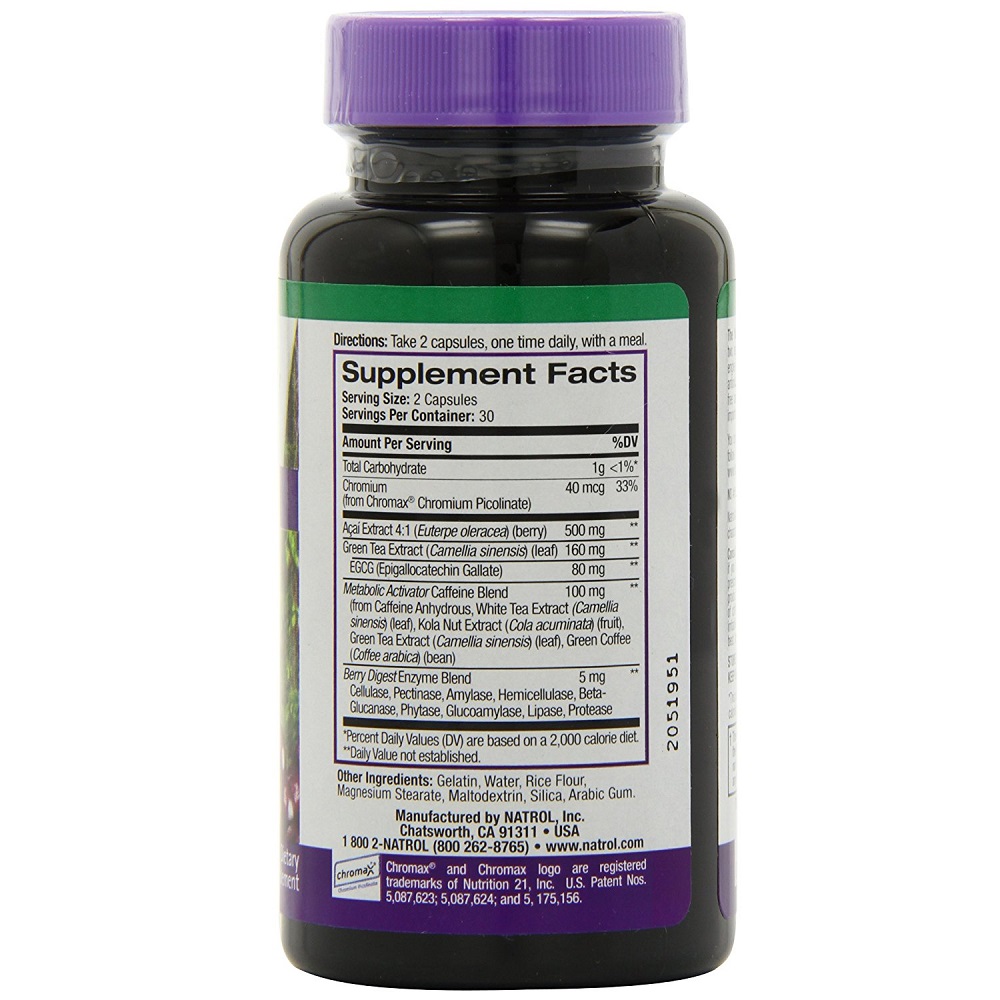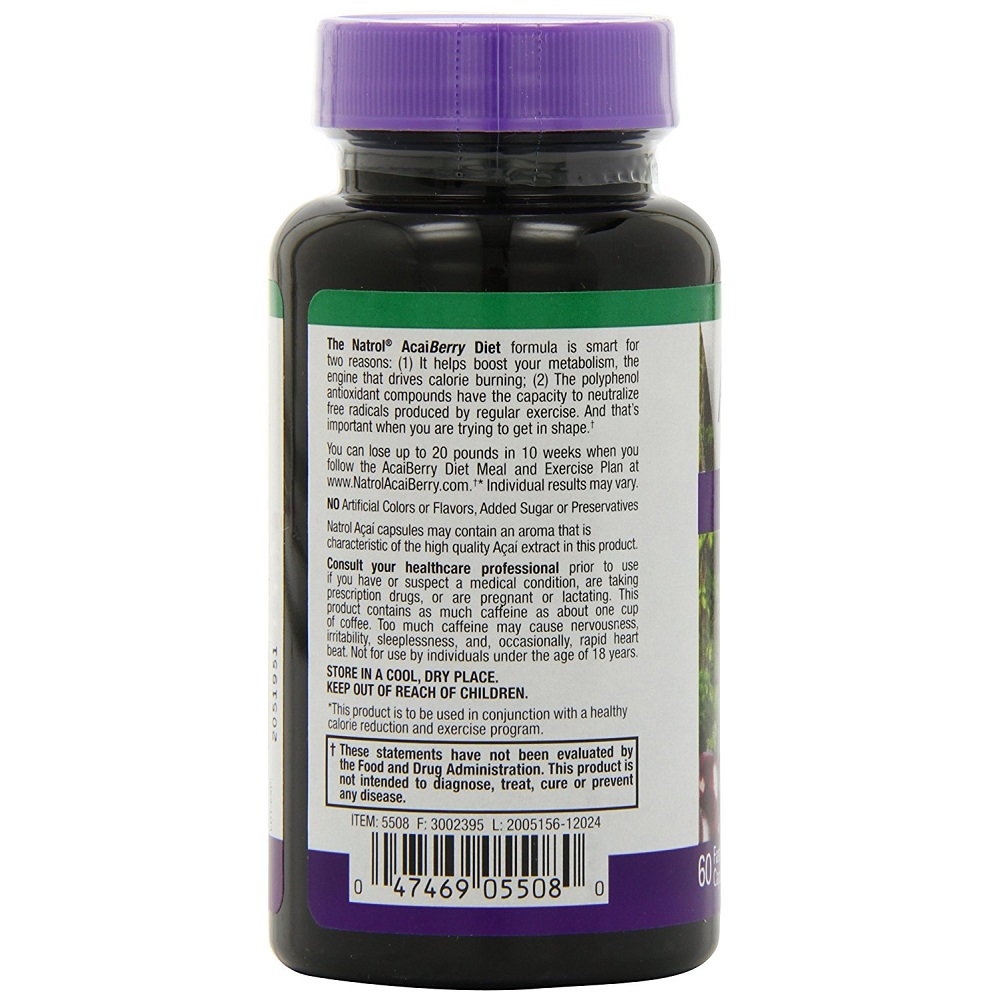| Carbohydrate | Carbohydrates are one of the main types of nutrients. They are the most important source of energy for your body. |
|---|
| Chromium | Chromium helps to move blood sugar (glucose) from the bloodstream into the cells to be used as energy and to turn fats, carbohydrates, and proteins into energy. |
|---|
| Acai | The acai (ah-sigh-EE) berry is a grape-like fruit harvested from acai palm trees. |
|---|
| Green tea | Antioxidant and Energy Booster |
|---|
| Epigallocatechin Gallate | Genital warts. A specific green tea extract ointment is approved for treating genital warts. |
|---|
| Caffeine Anhydrous | Energy Booster |
|---|
| White Tea | White tea extract’s is incredibly potent antioxidant, anti-aging properties. As the least processed tea, white tea retains more of the plant’s natural goodness than do black and green teas. |
|---|
| Kola Nut | According to a study published in the August 2009 “Food and Chemical Toxicology,” kola nut has similar effects to an equivalent dose of caffeine. Further, this same study concluded that you can safely consume kola nut in quantities up to 0.69 mg per 2.2 pounds of body weight, per day. |
|---|
| Green tea | Antioxidant and Energy Booster |
|---|
| Green Coffee | Green coffee beans are coffee beans that have not yet been roasted. It is thought to have health benefits for heart disease, diabetes, weight loss, and others. |
|---|
| Cellulase | Cellulases are used in many technical processes to make soluble the cellulose that is present in plant-based raw materials. |
|---|
| Pectinase | Promotes Growth and Health of Intestinal Microbiota |
|---|
| Amylase | Naturally Occuring Digestive Enzymes |
|---|
| Hemicellulase | Hemicellulase is used commercially in baking products and in various other food preparation technologies. This type of enzyme is also produced by microorganisms that live in the human digestive tract and degrade dietary hemicellulose, which humans are incapable of digesting. It is taken by some as a supplement to aid in digestion. |
|---|
| Beta-Glucanase | In the body, beta-glucanase helps to break down beta-linked glucose polymers that are usually associated with grains. |
|---|
| Phytase | Boost mineral absorption and bioavailability |
|---|
| Glucoamylase | An enzyme that breaks down starches and dextrins into glucose. The enzyme is produced by fungi, especially those in the Aspergillus genus. |
|---|
| Lipase | Lipase is a digestive enzyme that is found in many plants, animals, bacteria, and molds. |
|---|
| Protease | Any of a group of enzymes that catalyze the hydrolytic degradation of proteins or polypeptides to smaller amino acid polymers. |
|---|
| Cornstarch | Corn starch is often preferred to flour as a thickener because the resulting gel is transparent, rather than opaque. |
|---|
| Gelatin | Some people also use it for strengthening bones, joints, and fingernails. Gelatin is also used for improving hair quality and to shorten recovery after exercise and sports-related injury. |
|---|
| Silica | Increasing bone mineral density when obtained from foods. |
|---|
| Rice Flour | The health benefits of rice include its ability to provide fast and instant energy, regulate and improve bowel movements, stabilize blood sugar levels, and slow down the aging process, while also providing an essential source of vitamin B1 to the human body. |
|---|
| Magnesium Stearate | Magnesium stearate is often used as an anti-adherent in the manufacture of medical tablets, capsules and powders. |
|---|
| Maltodextrin | Maltodextrin is a starch-derived food additive that is commonly used as a thickening or filling agent in a range of commercial foods and beverages. |
|---|





Reviews
There are no reviews yet.